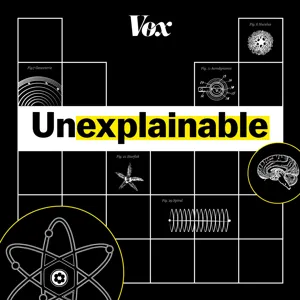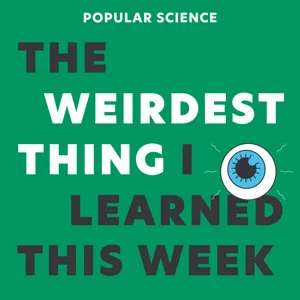Podcast Summary
Entomologist makes unexpected discovery in boa constrictor: Unexpected discoveries can be made in unexpected places, even in hobbies or areas outside of one's expertise. Keep an open mind and be willing to explore new possibilities.
Unexpected discoveries can be made in the most unlikely places. This was demonstrated in the story of Warren Booth, an entomologist who stumbled upon a case of parthenogenesis in a boa constrictor. While Booth's primary research focused on bugs, he had a hobby of maintaining a large collection of snakes. In 2010, he received an unusual request to perform a paternity test on a boa constrictor that had given birth to pink and yellow babies, which were valuable due to their rare coloration. Despite initially thinking his career was over, Booth was able to use his scientific expertise to determine that the babies had been produced through parthenogenesis, a form of asexual reproduction. This discovery was significant because it was rare for vertebrates to exhibit this form of reproduction. Booth was surprised and excited by the discovery and went on to write a scientific article about it. This story highlights the importance of being open to new experiences and the potential for unexpected discoveries in even the most familiar areas of study. Additionally, the story of Progressive Insurance's savings and discounts serves as a reminder that it's worth exploring options to save money and multitask efficiently.
Discoveries of Parthenogenesis in Various Animal Species: Researchers are finding parthenogenesis in more animal species than previously believed, including reptiles, sharks, rays, birds, and crocodiles. Some animals can even toggle between sexual and parthenogenetic reproduction.
Parthenogenesis, a form of asexual reproduction, is more common in various animal species than previously believed. Researchers have been discovering cases of parthenogenesis in reptiles, sharks, rays, birds, and even crocodiles. A notable example is a boa constrictor that exhibited parthenogenesis not once, but twice, leading to international recognition for the researcher studying it. More recently, a pregnant stingray named Charlotte went viral for giving birth seemingly without a male involved. While parthenogenesis is not new, researchers are now realizing that it might be more common than they thought. The next step is to understand why it occurs and what implications it has. Christine Dudgeon, a biologist studying sharks and rays, was surprised to find a shark named Leoni reproducing parthenogenetically after previously reproducing sexually. This discovery highlighted the ability of some animals to toggle between sexual and parthenogenetic reproduction. This phenomenon, which had only been observed in insects before, challenges our understanding of animal reproduction and evolution.
Exploring the strategic benefits of parthenogenesis for animals: Scientists propose that parthenogenesis, or asexual reproduction, could extend the timeline for certain animals to reproduce and maintain genetic diversity when they can't find a mate for sexual reproduction. However, more evidence is needed to confirm this hypothesis.
Scientists are exploring the possibility that parthenogenesis, or the ability for an organism to reproduce asexually, could be a strategic adaptation for certain animals when they are unable to find a mate for sexual reproduction. This hypothesis, proposed by Christine Janis, suggests that parthenogenesis could extend the timeline for these animals to reproduce and maintain genetic diversity, even if they miss the opportunity for sexual reproduction. However, this idea is still largely speculative and more evidence is needed, particularly of animals exhibiting parthenogenesis in the wild. Additionally, it raises questions about how this might apply to animals in nature, particularly those that migrate long distances and may occasionally get separated from potential mates. While the idea is intriguing, it is important to note that it is still a subject of ongoing research and debate.
Small changes, big difference: Easier mornings with Bombas and Zocdoc: Discovering Bombas for matching socks and Zocdoc for hassle-free dentist appointments brings convenience, comfort, and positivity to daily life
Making small changes in your daily life can bring significant ease and positivity. The discussion revolved around the support for the podcast from Bombas and Zocdoc, and the personal experiences shared by the speaker. From Bombas, the speaker shared her frustration with finding matching socks every morning and how ordering socks from Bombas, which donates an item of clothing for every purchase, made her life easier. Her toddler also enjoys the "letter socks," adding to the family's satisfaction. Bombas socks come with arch support, anti-blister tabs, and cushioned footbeds, making them a comfortable choice for all ages. Use the code "unexplainable" for a 20% discount on your first purchase at bombas.com/unexplainable. Zocdoc, a free app and website, was introduced as a solution for finding a new dentist when the speaker's previous dentist changed insurances. Zocdoc allows users to search and compare highly-rated in-network doctors near them, read verified patient reviews, and instantly book appointments online. This saves time and effort, ensuring a seamless experience. Download the Zocdoc app for free and find a top-rated doctor today at zocdoc.com/unexplainable. In summary, both Bombas and Zocdoc offer solutions to common daily challenges, bringing convenience, comfort, and positivity to the speaker's life. These small changes, made possible by these companies, make a significant difference.
Parthenogenesis: Offspring with Unusual Characteristics and Limited Survival: Parthenogenesis, a form of asexual reproduction, can lead to offspring with shorter lifespans, abnormal behaviors, and lower genetic variation compared to sexually produced individuals.
Parthenogenesis, a form of asexual reproduction, can result in offspring with unusual characteristics and limited survival. This was demonstrated through various examples of parthenogenetic snakes, including Warren Booth's experience with a parthenogenetic albino boa constrictor and a parthenogenetic ball python family from the UK. These offspring often had shorter lifespans, abnormal behaviors, and lower genetic variation compared to sexually produced individuals. Despite the potential for savings by insuring with Progressive, Warren's research on parthenogenesis showed that these offspring faced significant challenges in survival and reproduction. This pattern of limited success and inbreeding may be a common characteristic of parthenogenetic organisms in the vertebrate system.
The Debate Over Snake Parthenogenesis: Research suggests that parthenogenetic snake offspring are often inbred and not viable, but some argue that the surviving offspring could carry valuable genes
The ability of some snakes to reproduce through parthenogenesis, or virgin birth, might be an evolutionary artifact rather than a beneficial trait. Warren's research suggests that these offspring are often inbred and not viable for the next generation. However, Christine disagrees and argues that even if most of these parthenogenetic embryos fail, the ones that do make it to adulthood could have valuable genes. The debate highlights the complexity of evolution and the importance of continuing research to uncover new discoveries. Ultimately, the discussion underscores the idea that even seemingly insignificant traits could have hidden significance and that there's still much to learn about the natural world. As always, if you have any thoughts or ideas for the show, feel free to email us at unexplainable@vox.com. And don't forget to leave us a review to help spread the word about Unexplainable. We'll be back next week with another fascinating story from the world of science. This episode was reported and produced by Bird Pinkerton, edited by Jorge Just and Brian Resnick, and runs the show with Meredith Hodnot. Noam Hassenfeld did the music, Christian Ayala did the mix and sound design, and Melissa Hirsch did the fact checking. A big thank you to Alexis Sperling and Fritzen Hollis for explaining parthenogenesis to us. And a reminder that Vox is free in part because of donations from our readers and listeners. Visit vox.com/give to support our work.
Women Runners' Hidden Truths Revealed in 'Running Socks': Many women run marathons despite not loving the activity, finding motivation in self-empowerment, control, and proving themselves wrong.
Running, an activity often perceived as a source of joy and freedom for many, is not always the case for women runners. In the new docuseries "Running Socks," produced by Team Milk, it is revealed that most women runners dislike running but continue to do it for various reasons. This revelation challenges the common assumption that runners love running. The series explores the motivations behind women's decision to run marathons, with many sharing stories of taking back control, proving themselves wrong, and finding strength and empowerment through the experience. Team Milk, a brand focused on fueling women's performance, is hosting the inaugural Every Woman's Marathon in Savannah, Georgia on November 16, 2024, providing an opportunity for women to embark on their marathon journey. If you appreciate the shows you listen to and want to support their continued production, take a few minutes to fill out the Vox podcast survey at vox.com/podcastsurvey. Your feedback is valuable and helps ensure the production of content you enjoy.






